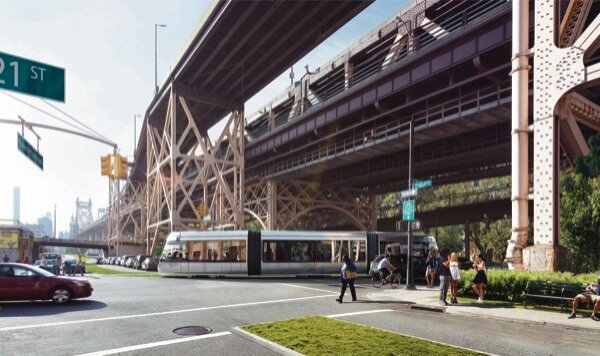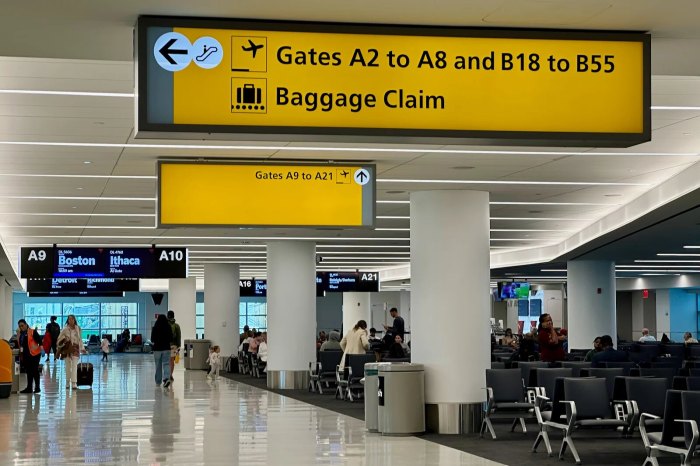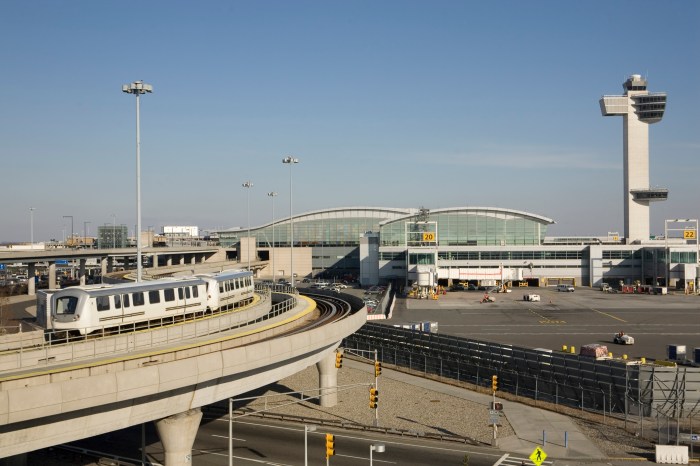By Mark Hallum
Public transit for New York City’s outer boroughs is designed to move commuters to and from Manhattan. The hub-and-spoke design of the subway system, however, no longer reflects the transportation needs of many New Yorkers, according to Executive Director for Transportation Alternatives Paul Steely-White.
Serving on the board of directors for Friends of the Brooklyn Queens Connector, Steely-White works with a variety of advocates to make Mayor Bill de Blasio’s streetcar proposal a reality.
The BQX is a plan to create a right of way for an above-ground street car to connect the growing tech centers of Long Island City and downtown Brooklyn. But both boroughs could benefit from the public transportation plan in the coming years in more ways than one.
The streetcar proposal links Astoria in the north with Sunset Park in the south, a roughly 16-mile route with a stop every half mile. According to the BQX website, connections with to up to 10 ferry landings, 30 bus routes, 15 subway lines, 116 Citi Bike stations and six LIRR lines would open up. Fares would be the same the same as for a ride on the subway.
Some 40,000 public housing residents are currently situated along the prospective corridor, according to Steely-White. A north/south streetcar would enable people to seek jobs in places they normally would not consider due to long commutes.
The BQX will modernize a concept that ruled the streets of New York prior to the construction of the subway and the birth of car culture.
Steely-White said streetcar lines throughout the city were torn up in the first half of the 20th century in order to prioritize the use of automobiles. Some critics of the BQX proposal contend the streetcar died for good reason, citing interference from double-parked cars, weather and power outages. But the Transportation Alternative leader said a protected right of way with battery power originating from within the cars themselves makes the detractions obsolete.
The main advantage of adding the Brooklyn Queens Connector for Steely-White is that it promotes the idea of a city free of automobiles, which is central to the goals of Transportation Alternatives. The nonprofit advocacy group promotes walking, bicycling and public transportation in the city. Vision Zero is what the group refers to as the ultimate achievement of eliminating automobile deaths from the streets.
“We want the BQX to enhance the bike-ability, walk-ability along the overall corridor itself,” Steely-White said.
The streetcar program is projected to be a $2.5 billion project, and once it is up and running would cost $26 million for maintenance and overhead. Although the BQX is still in the proposal stage, the earliest construction could be expected to break ground would be 2019.
At a May public visioning session in Astoria, residents voiced why they were for and against the very expensive project. One former construction worker, Pete Trivias, said buses should be sufficient for a north-south route along the waterfront while shedding the cost and time for construction.
“The MTA can be a pain sometimes,” Andre Stithe, an Astoria resident, countered. “Trains are hard. Buses are hard. You know it gives you a faster way of moving around and for me it will be good.”
Mayor Bill de Blasio highlighted the importance of serving the growing job markets in Queens and Brooklyn with better public transportation in a February address, as well as acknowledging the two boroughs were left out in terms of importance when public transportation in the city was originally planned.
“But times have changed. We’re an entirely different world now where the center of gravity is shifting more and more to the outer boroughs, and particularly to our two most populous boroughs. So we’ve got to answer that with a new kind of transportation and a new way to connect everyone,”de Blasio said.
Reach reporter Mark Hallum by e-mail at mhall




































